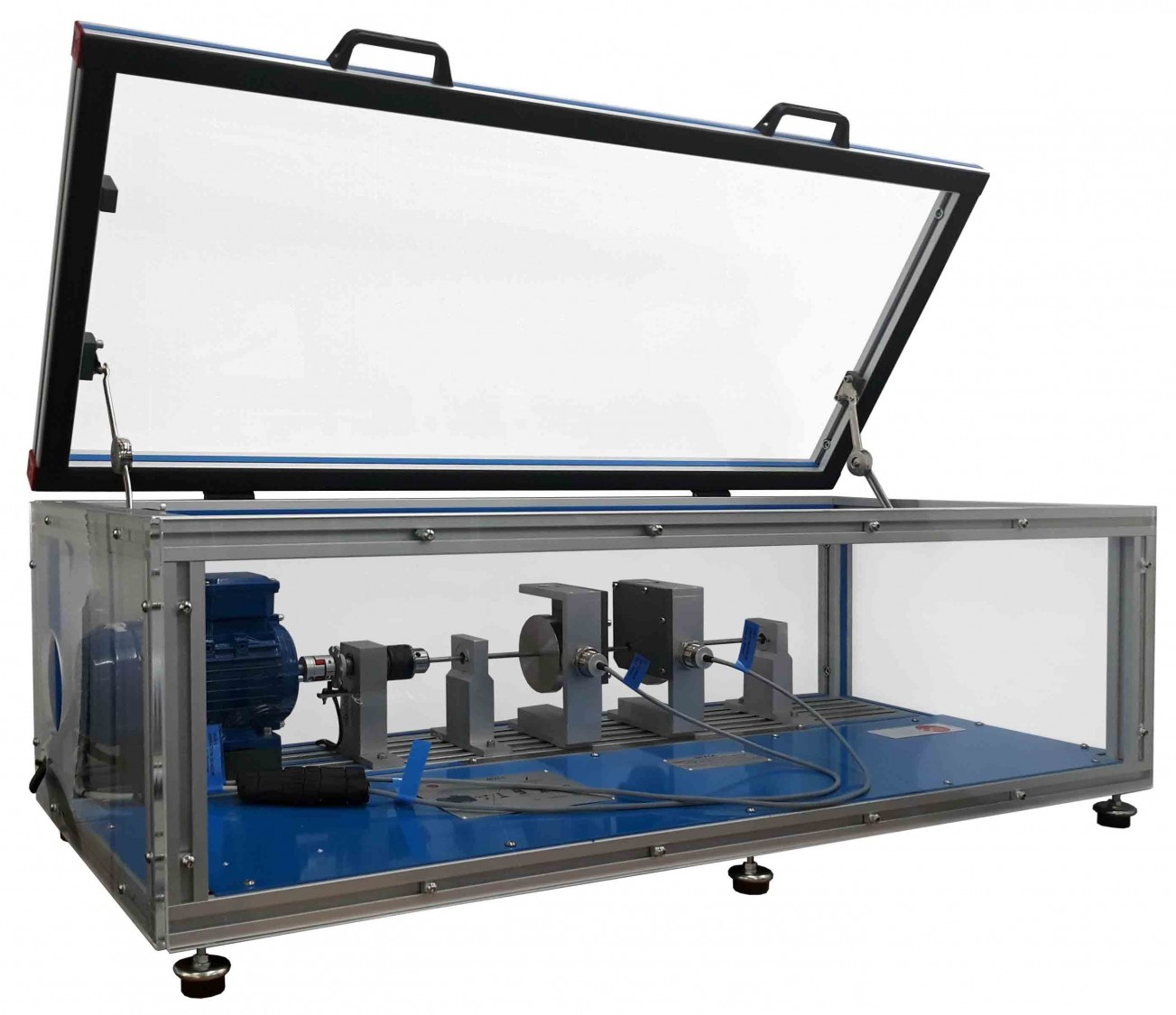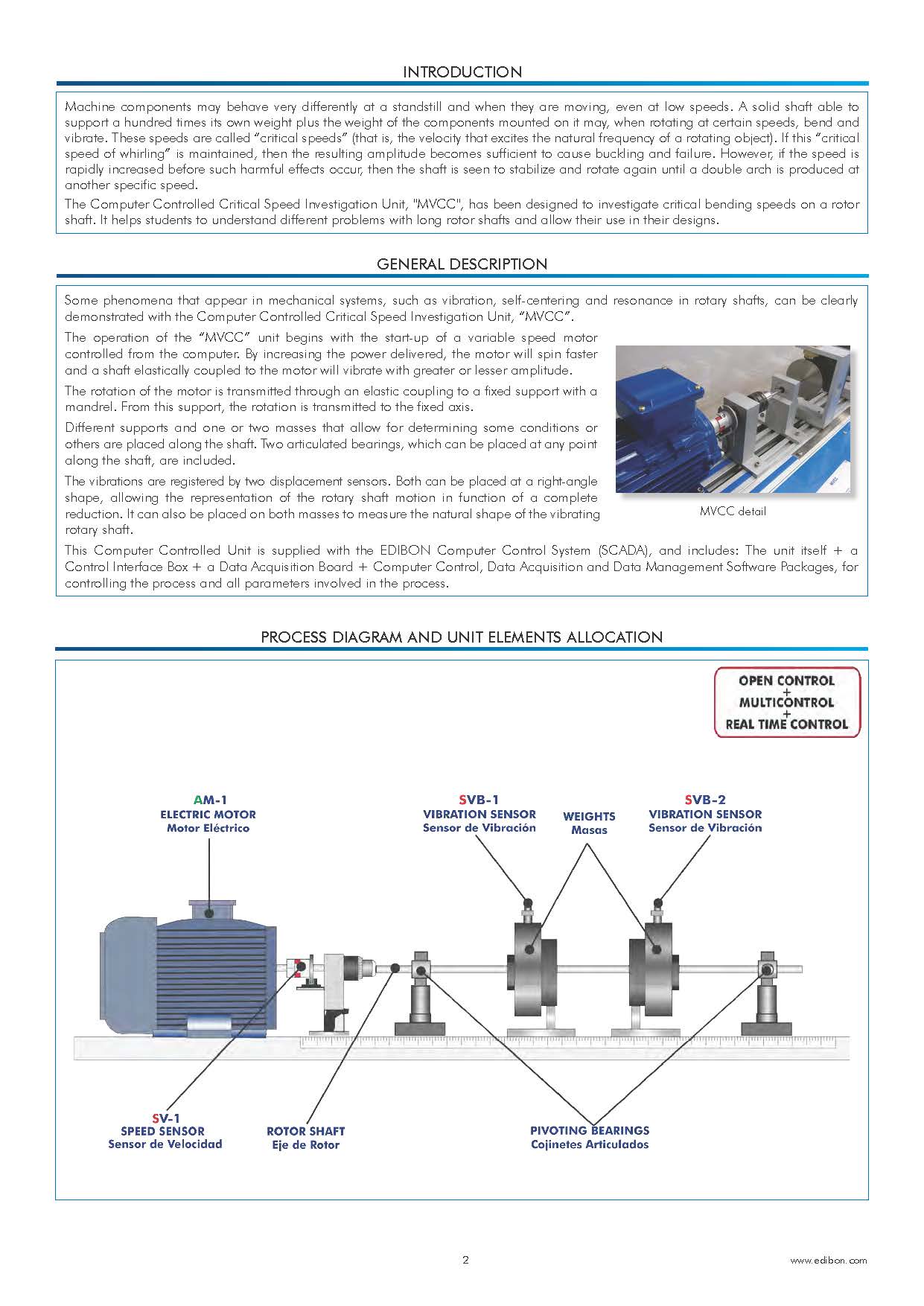
Computer Controlled Critical Speed Investigation Unit
INTRODUCTION
Machine components may behave very differently at a standstill and when they are moving, even at low speeds. A solid shaft able to support a hundred times its own weight plus the weight of the components mounted on it may, when rotating at certain speeds, bend and vibrate. These speeds are called “critical speeds” (that is, the velocity that excites the natural frequency of a rotating object). If this “critical speed of whirling” is maintained, then the resulting amplitude becomes sufficient to cause buckling and failure. However, if the speed is rapidly increased before such harmful effects occur, then the shaft is seen to stabilize and rotate again until a double arch is produced at another specific speed.
The Computer Controlled Critical Speed Investigation Unit, “MVCC”, has been designed to investigate critical bending speeds on a rotor shaft. It helps students to understand different problems with long rotor shafts and allow their use in their designs.
EXERCISES AND PRACTICAL POSSIBILITIES
- Study of the bending oscillation on a simply loaded rotor shaft at various speeds.
- Study of the critical speed on a simply loaded rotor shaft.
- Study of the critical speed on a double loaded rotor shaft.
- Study of the critical speed on a shaft with cantilever load.
- Study of vibrations on a rotor shaft in an oscilloscope.
Additional practical possibilities: - Demonstration of basic whirling on a shaft.
- Study of the resonance on a rotor shaft.
- Study of self-centering of a rotor shaft.
- Sensors calibration.
Other possibilities to be done with this Unit: - Many students view results simultaneously.
To view all results in real time in the classroom by means of a projector or an electronic whiteboard. - Open Control, Multicontrol and Real Time Control.
This unit allows intrinsically and/or extrinsically to change the span, gains; proportional, integral, derivative parameters; etc, in real time.



